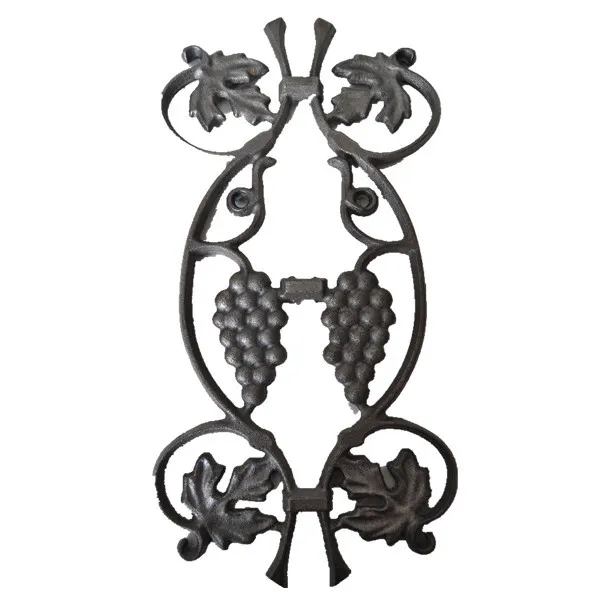Exploring Innovations and Techniques in the Field of Welding and Fabrication Technologies Today
The Art and Science of Welding
Welding is both an art and a science that plays a crucial role in various industries, from construction and automotive manufacturing to art installations and shipbuilding. At its core, welding is the process of joining metals or thermoplastics by applying heat, pressure, or both, resulting in a permanent bond. This process not only requires technical skills and understanding of materials but also an appreciation for the artistry involved in creating strong and aesthetically pleasing joints.
Types of Welding
There are several types of welding techniques, each suited for different applications and materials. Some of the most common methods include
1. MIG Welding (Metal Inert Gas) This technique uses a continuously fed wire electrode and a shielding gas to protect the weld pool from contamination. MIG welding is widely popular due to its versatility and ease of use, making it a preferred choice for beginners and professional welders alike.
2. TIG Welding (Tungsten Inert Gas) TIG welding employs a non-consumable tungsten electrode to produce the weld. Unlike MIG, it requires the welder to manually feed a filler rod into the weld pool. This method allows for greater control and precision, making it ideal for thin materials and intricate designs.
3. Stick Welding (Shielded Metal Arc Welding) This traditional method involves the use of a consumable electrode coated in flux to produce the weld. Stick welding is particularly advantageous for outdoor work due to its ability to perform well in windy conditions.
4. Spot Welding Often used in the automotive industry, spot welding involves joining overlapping metal sheets by applying pressure and electrical current to specific points, creating small weld spots. This method is efficient for mass production.
welding hings

Importance of Welding
The significance of welding cannot be overstated. It is foundational to the construction of buildings, bridges, and infrastructure. The automotive industry relies heavily on welding to assemble vehicles, ensuring both structural integrity and safety. In addition to industrial applications, welding is also utilized in art, where artists create sculptures and installations, transforming metal into intricate works of art.
Welding also contributes to the economy by providing skilled jobs. Welders are in high demand, and the field offers various career paths, including specialized areas such as underwater welding or robotic welding. As technology advances, so does the need for skilled professionals who can adapt to new methods and machinery.
Safety Considerations
While welding is an essential skill, it also poses significant hazards. Proper safety measures must be adhered to prevent injuries. Welders must wear appropriate protective gear, including helmets with face shields, gloves, and fire-resistant clothing to safeguard against sparks and intense light generated during the process. Ventilation is also crucial, as fumes generated during welding can be harmful; therefore, working in well-ventilated areas or using fume extraction systems is critical.
Conclusion
In conclusion, welding is a diverse and dynamic field that combines technical skill with creativity. Whether in industrial settings or artistic endeavors, the impact of welding is profound. As technology continues to evolve, the methods and applications of welding will undoubtedly advance, further solidifying its importance in modern society. For anyone considering a career in this field, embracing the challenge of welding can lead to a fulfilling profession that contributes to both infrastructure and artistry. As we look to the future, the ongoing evolution of welding will continue to play a pivotal role in shaping our world.
-
Wrought Iron Components: Timeless Elegance and Structural StrengthNewsJul.28,2025
-
Window Hardware Essentials: Rollers, Handles, and Locking SolutionsNewsJul.28,2025
-
Small Agricultural Processing Machines: Corn Threshers, Cassava Chippers, Grain Peelers & Chaff CuttersNewsJul.28,2025
-
Sliding Rollers: Smooth, Silent, and Built to LastNewsJul.28,2025
-
Cast Iron Stoves: Timeless Heating with Modern EfficiencyNewsJul.28,2025
-
Cast Iron Pipe and Fitting: Durable, Fire-Resistant Solutions for Plumbing and DrainageNewsJul.28,2025
-
 Wrought Iron Components: Timeless Elegance and Structural StrengthJul-28-2025Wrought Iron Components: Timeless Elegance and Structural Strength
Wrought Iron Components: Timeless Elegance and Structural StrengthJul-28-2025Wrought Iron Components: Timeless Elegance and Structural Strength -
 Window Hardware Essentials: Rollers, Handles, and Locking SolutionsJul-28-2025Window Hardware Essentials: Rollers, Handles, and Locking Solutions
Window Hardware Essentials: Rollers, Handles, and Locking SolutionsJul-28-2025Window Hardware Essentials: Rollers, Handles, and Locking Solutions -
 Small Agricultural Processing Machines: Corn Threshers, Cassava Chippers, Grain Peelers & Chaff CuttersJul-28-2025Small Agricultural Processing Machines: Corn Threshers, Cassava Chippers, Grain Peelers & Chaff Cutters
Small Agricultural Processing Machines: Corn Threshers, Cassava Chippers, Grain Peelers & Chaff CuttersJul-28-2025Small Agricultural Processing Machines: Corn Threshers, Cassava Chippers, Grain Peelers & Chaff Cutters












